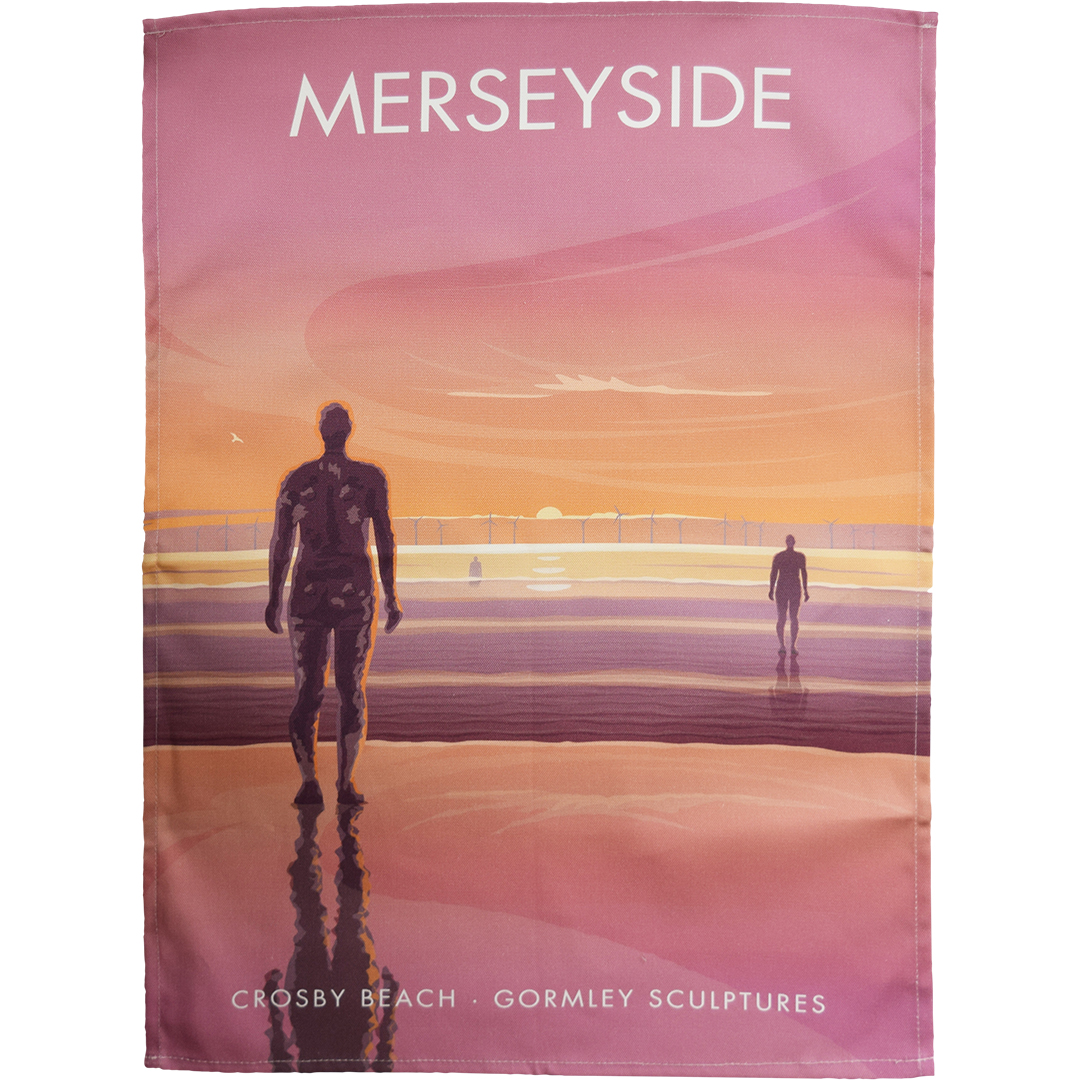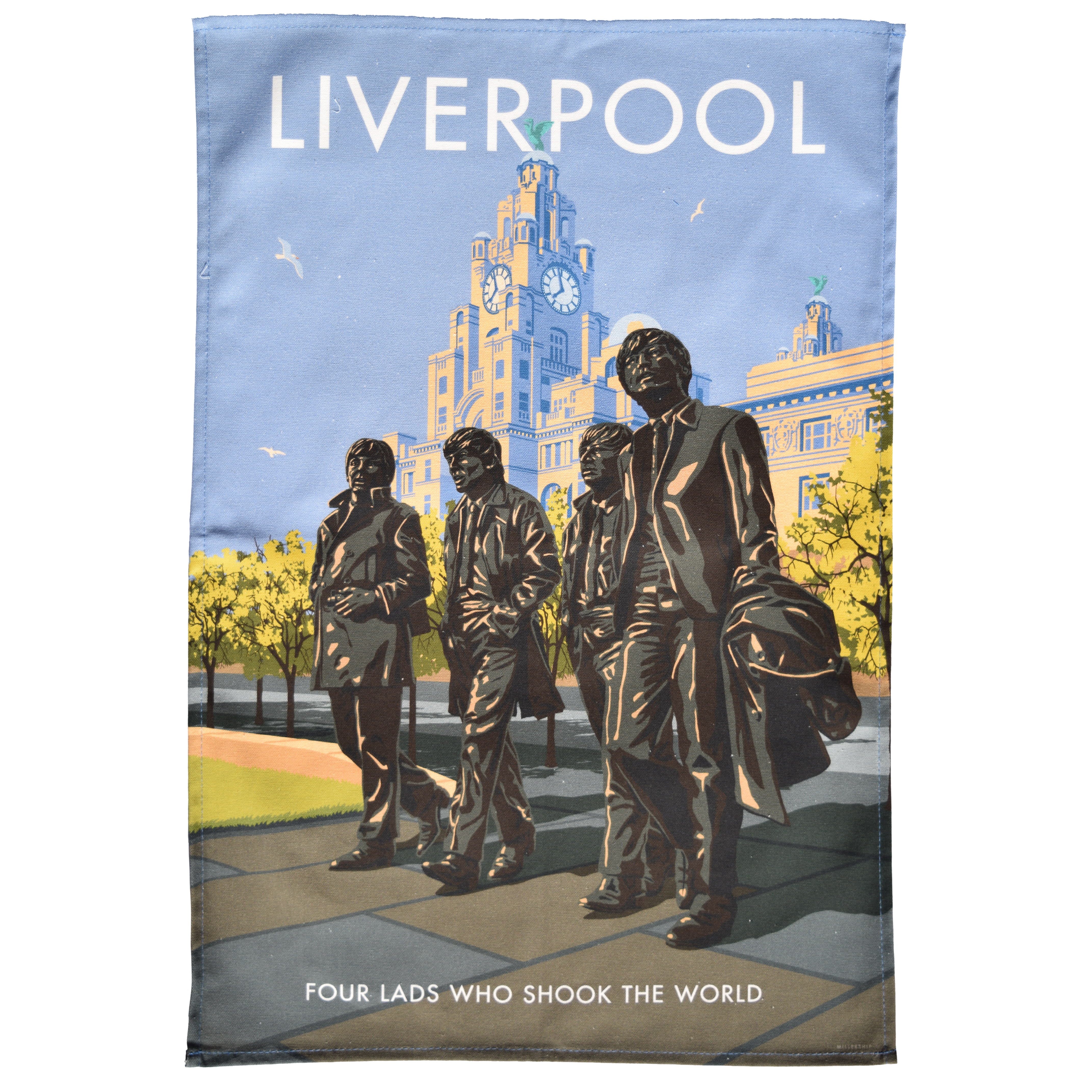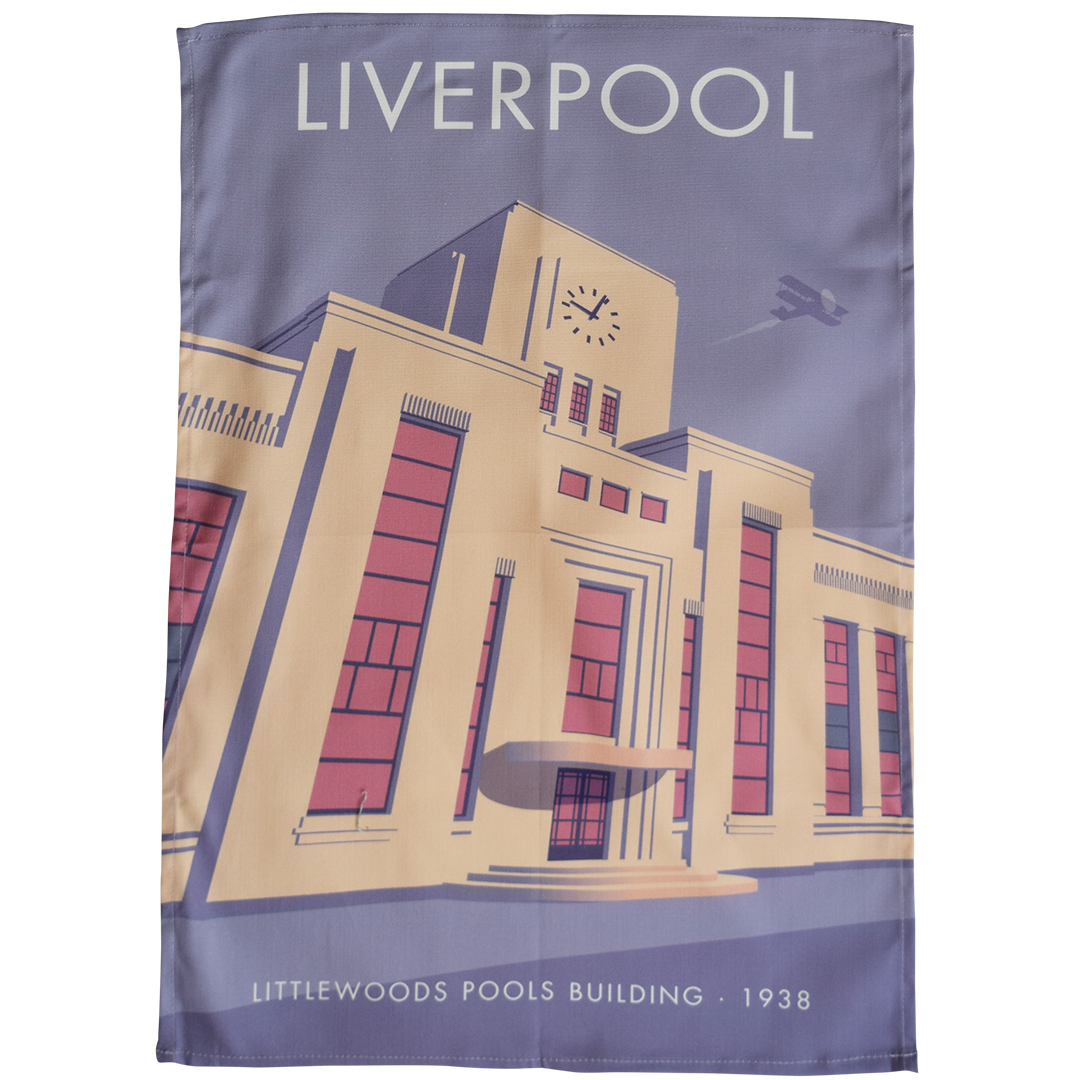Liverpool: The New York of Europe
Posted by Pete on 5th Jan 2022
Our historian, Pete, dives into the melting-pot of Liverpool's past...
As a Manc I admit it through gritted teeth, but Liverpool is a pretty special place.
Sitting on the east bank of the Mersey where it flows into the Irish Sea, Liverpool has been one of the world’s great port cities since the 18th century.
This is key to its story. You can’t understand Liverpool without one foot in the ocean.
Anthony Gormley's Iron Men pay tribute to the importance of the ocean in shaping Liverpool's past.
Click here to view our Crosby Beach tea towel
There is much to regret in this watery tale, not least how Liverpool was one of the grim nodes of Britain’s transatlantic slave trade.
But there is also much wonder in how the ocean has shaped the city, specifically in its strong connection to Ireland.
Over the last few centuries, hundreds of thousands of people have sailed east across the Irish Sea into the port of Liverpool, many of them settling in the growing city.
This link has made its mark on the development and enrichment of Liverpudlian culture. You can hardly walk 5 minutes in any direction from Liverpool Lime Street station without passing an Irish pub.
Not to mention The Beatles: John, Paul, and George were all of Irish descent.
The Beatles Statue is symbolically placed on the Liverpool Waterfront.
Click here to view our Beatles tea towel
But the Liverpudlian melting-pot goes way beyond the Irish.
As Liverpool expanded during the 19th century it attracted people from all over Europe: Germans, Greeks, Scandinavians and more.
All manner of cultural and religious institutions emerged around these new arrivals, like the Princes Road Synagogue and the Greek Orthodox Church of St Nicholas in Toxteth. They began calling Liverpool the “New York of Europe”.
This may sound like a big name for a city with a population of less than half a million. But Liverpool's significance as a city should not be underestimated.
Because without Liverpool, the Allies might have lost World War Two, and the Nazis might have invaded and conquered Britain.
Due to its strategic coastal position, Liverpool was chosen as the British HQ for naval operations in the Atlantic.
Britain had to win the Battle of the Atlantic in order to survive, and survive it did. And Liverpool's role was crucial in that survival.
The whole of the city was put to work in service of the war effort. The iconic Littlewoods Building was requisitioned to print National Registration forms and to assemble Halifax Bombers.
Beneath the Littlewoods Building is an elaborate network of tunnels and bunkers, built by the war ministry to protect workers during bombing raids.
During the war, the Luftwaffe made 80 raids on Merseyside, killing 2,500 people in a Blitz second only to London's.
Clearly, Hitler understood the city's strategic importance.
The Littlewoods Pools Building is one of many buildings in Liverpool that was central to the British war effort.
Click here to view our Littlewoods tea towel
So I think you'll agree that Liverpool is a pretty cool place. It won the war. It gave us the Beatles. And of course, it's home to two of the most famous football clubs in the world: Everton and Liverpool.
With its front foot in the water, Liverpool is a truly global city, a melting-pot of different people and cultures.
Not only is the city home to the UK's oldest black community, it's also the home of the oldest Chinese community in the whole of Europe, dating back to the 1830s when the first trading vessels arrived from China.
No matter where they hail from, anyone can be a Liverpudlian.
That - I reckon - is what makes a great city.



